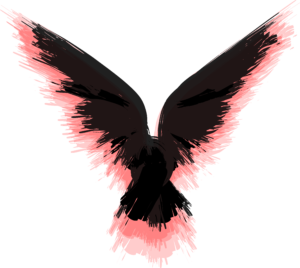How can your character utilize their Christmas tree after Christmas is over? What health benefits can your character get out of pine? What do torches and baskets have to do with pine? How could pine be used in survival situations? What about a goat? Find out on this episode!
Welcome to Writing Rural with Alley, the fiction writer’s inspiration station for rural life and lifestyles, from historical to post-apocalyptic, helping you bring your rural stories to life! I’m Alley, and this episode is going out on Christmas, so if you are listening to it in real-time, Merry Christmas! I wanted a Christmas-themed one this year, and my kids informed me it had to be a pine tree. So, without further ado, welcome to episode 53, The Many Uses of Pine. Stick around to the end to find out all the ways things could go wrong. Now, let’s get into this.
A quick disclaimer: I am in no way, shape, form, or fashion a medical anything, nor am I a nutritionist. Nothing on here is meant as medical or food advice, but it is solely for the purposes of fiction writing and nothing else!
Every year, pine trees are cut down to be used as Christmas trees, but what can they be used for afterward? They can be used for a few things. Please remember that if the Christmas tree is sprayed with chemicals, it is useless and could be deadly. Never use any that have chemicals on them! About 85% of commercially sold Christmas trees are sprayed, but in history they were not. It’s unlikely they would be after an apocalypse.
In our home, any time we have goats, we offer to take people’s real trees off their hands for free, and then we fed them to our goats. The reason is that pine is a great dewormer for goats. It’s what we use every year, and it works wonderfully! Keep in mind we had many goats, and like anything else, too much of anything can be harmful. For single animals, they should be fed smaller amounts over a longer period.
That said, there are two pine look-likes you have to watch out for, as they can be deadly to goats. Hemlock the tree. Yes, there is a tree with that name. And Yew pines. Both of these are toxic to a goat’s digestive tract, and your character will need to be on the lookout. Make sure they ask the seller.
Another thing that can be done is to make pine chests out of them. Pine is amazing at keeping moths away. People used to store special clothing in pine chests to keep them safe from the moths eating them. Plus, it smells amazing!
There is also fatwood. Fatwood is sap-filled wood, preferably dried until hard, but it could be used before then. Pine has sap, sometimes called resin. This sap-filled wood is highly flammable and will hold a flame longer. This is important for survival situations and for easier lighting of a fire. However, pine is not an advised wood to burn in a fireplace or wood stove. Pine gives off a smoke that has particles that cling to the chimney. This is dangerous because buildup can lead to chimney fires, which is a leading cause of house fires. My own home burned down from a chimney fire. It’s hard enough to lose a home in modern times. It would be even more devastating in history, with no firefighters or people nearby.
Another type of fire starting was pine cones. Pinecones also have the sap inside them and are good for starting fires.
Historically, the branches have been used as a type of natural torch.
Your character could also make tea from the pine needles. Before we dive too far into what can be used like this, remember, Yew trees look like pine but are deadly! Also Ponderosa pine is said to be unsafe for pregnant women. Your character has to be careful. OK, back to the subject: Pine needle tea.
Pine needle tea is surprisingly yummy and has a citric flavor. It is high in vitamin C that helps boost the immune system. It has anti-inflammatory properties, and some research suggests it helps support the heart and brain. Many native tribes used it to help with menstrual cramps and as a sleep aid.
Pine needle tea is easy to make. Your character will gather fresh green pine needles from the tree. If possible, they will rinse them; however, this would be hard in a survival situation with limited water. Brown needles will be thrown out, and many people cut off the brown tips, but others do not. They will be steeped in the water for 15-20 minutes, and then the needles are removed with straining them. Again, survival situations can make this hard or impossible. Or you can just be stubborn like my dad, and leave them in. Honey or lemon juice can be added. Sugar can also be used. It is ready to drink and will help your character warm up on cold days, if it is drunk hot.
Many native tribes also ate pine needles raw. Pine needles eaten like this contain K, A, C, and D. Vitamins A and C help with making red blood cells. They also help the immune system. Vitamin A also helps our eyes, and vitamin D helps with bone health. Vitamin K helps with blood clotting and wound healing.
They also ate pine cone seeds. They can be heated in an oven or over a fire, and they will naturally open to expose the seeds. Pine cone seeds have protein, magnesium, iron, omega-3, and vitamin E. More modern research suggests that pine cone seeds can help the heart, help to stabilize blood sugars, and even slow cognitive decline, such as that associated with Alzheimer’s. However, It will not stop the decline altogether.
Other food type of things it can be used for is pine-smoked meats, pine-infused vinegar, pine-infused cooking oil, and even pine needle cookies. Yummy!
There are many medical uses such as pine bark Band-Aids. Enough bark is taken off to cover the wound and held on with duct tape or twine. I know that sounds painful, but the inside of the bark is what is placed against the wound, and it is actually quite soft and soothing.
George Washington made mention of the best bug repellant he ever used having a base of pine resin. He said it had weeks of protection. I found that interesting and also wondered how often he bathed as we know bathing today.
The bark can also be eaten (OK, not with blood all over it) and is said to be fried like bacon. I suppose that is why they call it pine bark bacon.
Other uses I have come across are cough syrup, chest rubs, foot soaks, and even turned into steam to breathe in to help with congestion or other breathing illnesses.
Many tribes used pine needles to weave baskets. The Seminoles are the most well-known basket weavers. Let’s go over the basics of basket weaving. Pine needles were gathered and placed in boiling water for roughly 10 minutes or until they were pliable, a fancy way of saying it’s easy to bend without breaking them. They would be twisted into small bunches and tied together with some type of thread. This could be a thin yarn or thick thread made of plant materials. The bottom was formed first by twisting a piece into a circle and tying it there. The end was left open to place the next group of needles into and twist them together, then tied and coiled. The coils were sewn together until the bottom was finished, then a coil would be sown in the upright position and continued until they reached the ideal depth of the basket. Afterward, the end would be secured extra well, and they had a new basket.
However, the pine needles that fall off the tree have many good uses too. Brown pine needles make great mulch for the garden! Adding a layer of pine needles can help keep the ground damp and prevent weeds. It can also be used as chicken or rabbit bedding.
A last few uses include soap. Some soaps have pine needles in the recipe. Beard balm is another thing that can call for pine needles. Home-made cleaners and air fresheners use pine to make the cleaner or the air smell more pleasant. Historically pine trees were also used for fence posts. It has become less common with the modern t-post and treated lumber.
Fun fact: Pine is one of the most popular soil erosion controls, as their root system is designed to hold tightly, and they can not only grow but thrive in almost any type of soil.
What could possibly go wrong?
Before we get to the best part, if you enjoy this podcast, I hope you’ll take a minute to follow, rate, and review on your podcasting platform. And if you are listening on YouTube, subscribe and hit that “Like” button. Don’t forget to share with a friend. Now for everyone’s favorite part!
Likely to go wrong: Your character used pine as a fence post. Even in the best of circumstances after a few years, the post will start to rot and will need replaced.
Likely to go wrong: Your character is weaving a pine needle basket, and they stab themselves with the needle they are using to stitch the pine needle coils together with.
Possible to go wrong: Your character is boiling pine needles to make a pine needle basket. When they go to remove them from the water, they accidentally scald themselves on the boiling water.
Possible to go wrong: Your character doesn’t know that lodgepole pinecones need to be opened with fire, and they try to pry it open with a knife. In the process they slip, and slice their hand open.
Possible to go wrong: Your character uses pine bark as a Band-Aid. They do not know the correct way to use it, and place the outside of the bark against their wound. This could be painful and further damage the wound.
Unlikely to go wrong: Your character makes pine needle tea but doesn’t strain out the needles. When they go to drink it, they choke on a pine needle.
Unlikely to go wrong: Your character brings a Christmas tree home, only to find they have a new feathered roommate living in their tree.
Unlikely to go wrong: Your character gives their Christmas tree to their goat, but it was sprayed with pesticides. This could kill the goats.
Improbable but still technically in the realm of possibilities: Your character makes pine needle tea, only to discover they are allergic to it. Their throat could swell and shut off. This could be deadly.
Improbable but still technically in the realm of possibilities: Your character doesn’t know the different types of pine trees and eats some Yew pine. Yew is toxic, and this could be deadly.
Thanks for listening! You can find the show notes and helpful links to learn more on my website, alleyhart.com. That’s A-L-L-E-Y-H-A-R-T.com. Subscribe or follow for more episodes. Connect by dropping me a comment on my YouTube videos. A new episode comes out every Monday. Until then, happy wordsmithing.
Helpful Links to Learn More:
Pine:
https://bushcraftusa.com/forum/threads/a-guide-to-pine-trees-and-their-uses.4129/
https://permies.com/t/178194/Pine-Tree-Logs
https://gardengoodsdirect.com/blogs/news/5-reasons-to-plant-pine-trees




